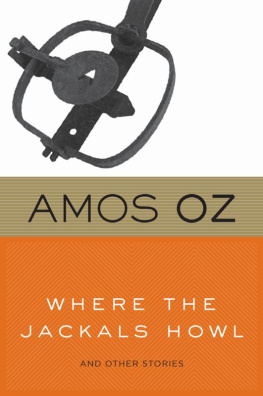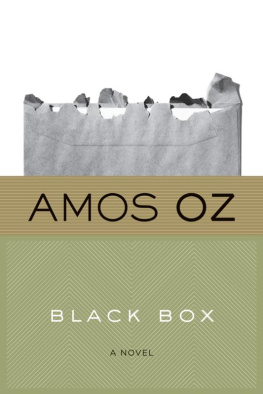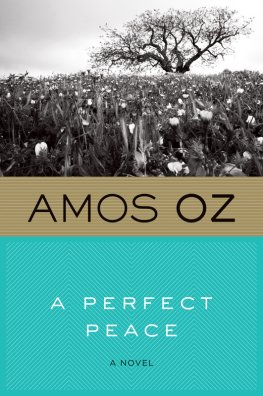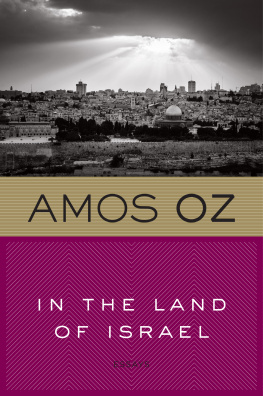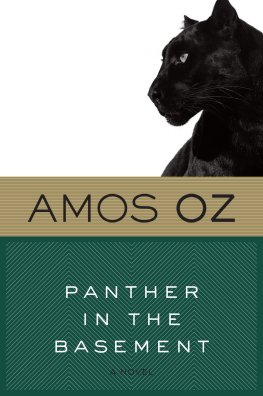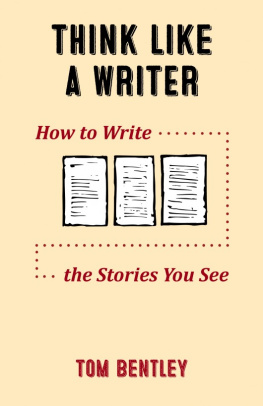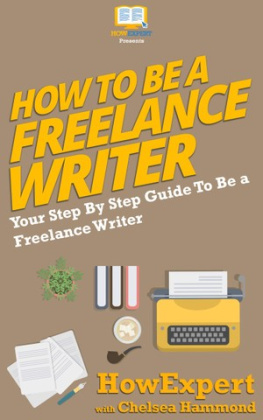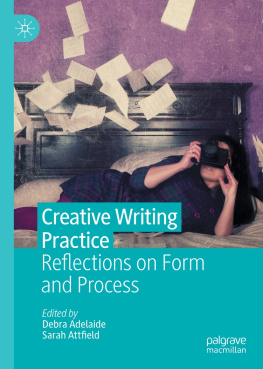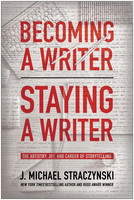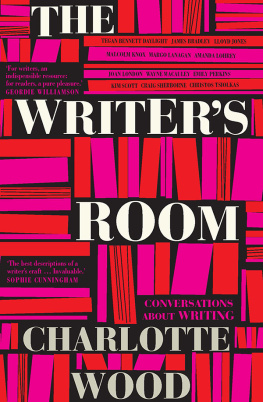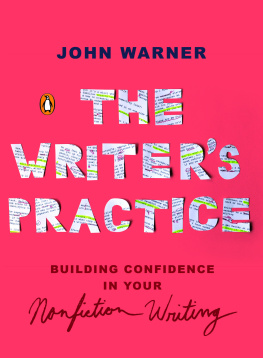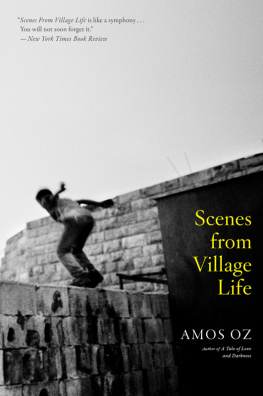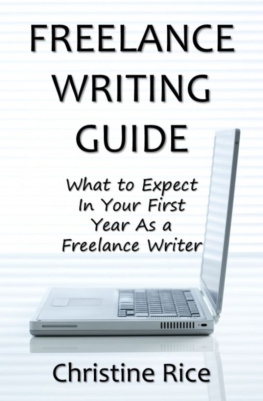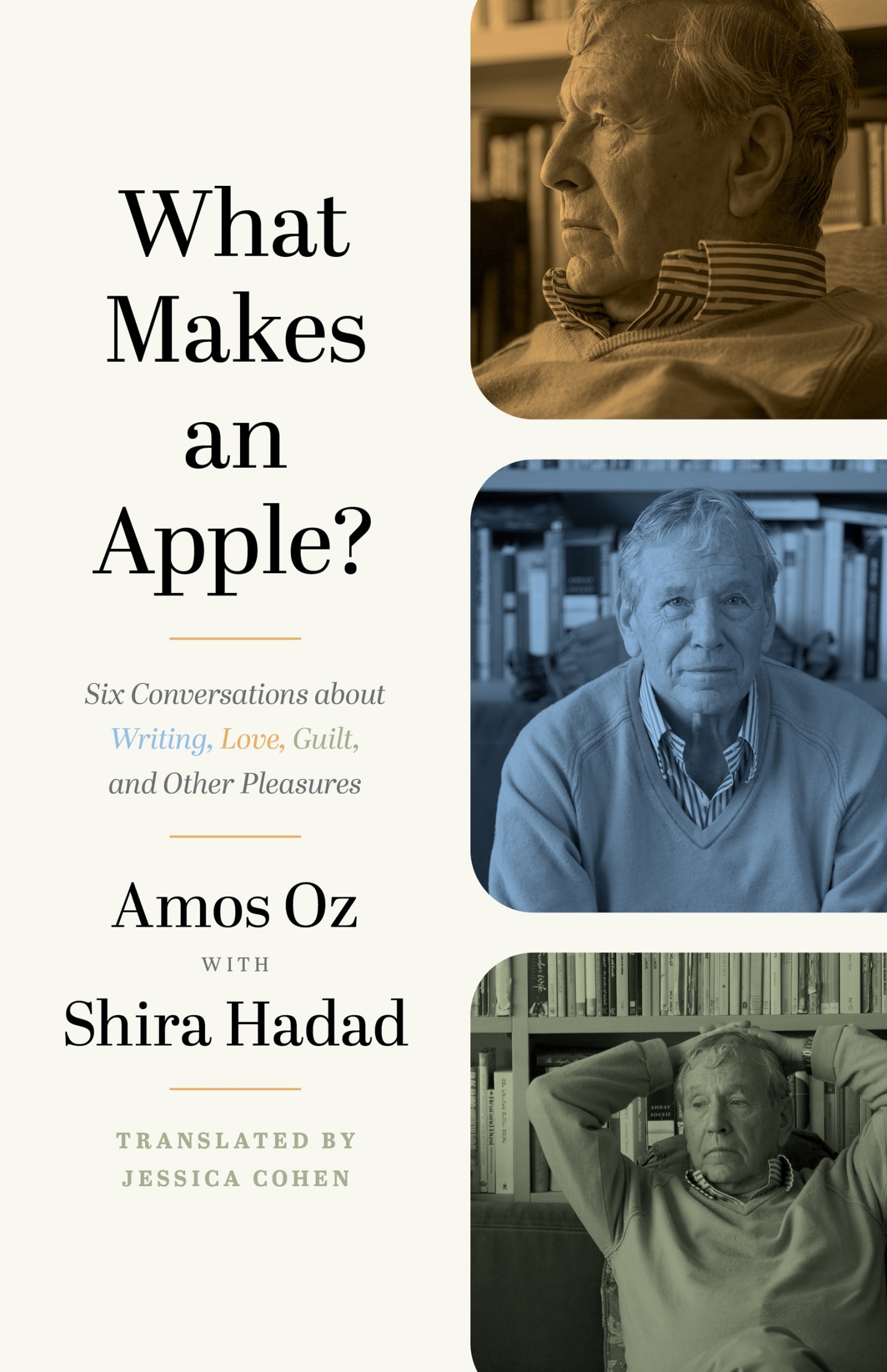WHAT MAKES AN APPLE?
WHAT MAKES AN APPLE?
Six Conversations about Writing, Love, Guilt, and Other Pleasures

AMOS OZ
WITH SHIRA HADAD
Translated by Jessica Cohen
PRINCETON UNIVERSITY PRESS
PRINCETON AND OXFORD
Copyright 2018 by Black Box and Shira Hadad.
English translation copyright 2022 by Jessica Cohen.
Originally published in Hebrew by Keter Books Ltd., 2018
Princeton University Press is committed to the protection of copyright and the intellectual property our authors entrust to us. Copyright promotes the progress and integrity of knowledge. Thank you for supporting free speech and the global exchange of ideas by purchasing an authorized edition of this book. If you wish to reproduce or distribute any part of it in any form, please obtain permission.
Requests for permission to reproduce material from this work should be sent to
Published by Princeton University Press
41 William Street, Princeton, New Jersey 08540
99 Banbury Road, Oxford OX2 6JX
press.princeton.edu
All Rights Reserved
Library of Congress Cataloging-in-Publication Data
Names: Oz, Amos, 19392018, interviewee. | adad, Shirah, interviewer. | Cohen, Jessica (Translator), translator.
Title: What makes an apple? : six conversations about writing, love, guilt, and other pleasures / Amos Oz with Shira Hadad ; translated by Jessica Cohen.
Other titles: Mi-mah asui ha-tapua. English
Description: Princeton : Princeton University Press, [2022]
Identifiers: LCCN 2021033877 (print) | LCCN 2021033878 (ebook) | ISBN 9780691219905 (hardback ; acid-free paper) | ISBN 9780691230276 (paperback ; acid-free paper) | ISBN 9780691230269 (ebook)
Subjects: LCSH: Oz, Amos, 19392018Interviews. | Authors, Israeli20th centuryInterviews. | LCGFT: Interviews.
Classification: LCC PJ5054.O9 Z46 2022 (print) | LCC PJ5054.O9 (ebook) |
DDC 892.43/6 [B]dc23/eng/20211119
LC record available at https: / /lccn.loc.gov/2021033877
LC ebook record available at https: / /lccn.loc.gov/2021033878
Version 1.0
British Library Cataloging-in-Publication Data is available
Editorial: Anne Savarese and James Collier
Production Editorial: Ellen Foos
Text Design: Carmina Alvarez
Jacket Design: Lauren Michelle Smith
Production: Erin Suydam
Publicity: Jodi Price and Carmen Jimenez
Copyeditor: P. David Hornik
Jacket images: Amoz Oz in Tel Aviv, Israel, March 8, 2013. ZUMA Press, Inc. / Alamy Stock Photo
CONTENTS
- vii
PREFACE
In the spring of 2014, while I was editing Amos Ozs novel Judas, we began to talk. After the book was published that summer, we found that our conversation was not finished. We continued to meet at Amoss home, where we discussed books and writers, inspiration and influence, writing habits and guilt, marriage and parenthood. After a few weeks we moved from the living room to the study, where we placed a tape recorder on the desk between us.
This book results from the dozens of recorded hours we amassed. The conversations are not presented in the order in which they occurred, nor is every chapter a transcription of one single conversation that began and ended on the same day. We often returned to topics that preoccupied us, and we expanded, condensed, and combined separate parts of intersecting conversations. As we worked together, we developed a friendship. The chapters in this book are not journalistic interviews but the product of a continuous dialogue, giving voice to a close friendship formed over an extended period of time.
There were many topics we did not broach at all. Neither of us felt that this book should be comprehensive. Amoss collection of essays, Dear Zealots, was published in the summer of 2017. Its three essays partially overlapped with some of our political conversations, which we decided to omit from this book. Some of the more essayistic portions of our talks will be collected in a separate volume for future publication. This was how What Makes an Apple? evolvedas a personal and biographical book, one possible portrait of Amos Oz as he became known to me in recent years.
Shira Hadad, May 2018
A Heart Pierced by an Arrow
What motivates you as a writer?
In the schoolyard at the Gymnasia Rehavia high school, in Jerusalem, there was a eucalyptus tree on which someone had carved a heart pierced by an arrow. On the pierced heart, on either side of the arrow, were the names Gadi and Ruthi. I remember that even back then, when I was roughly thirteen, I thought: It must have been Gadi who did that, not Ruthi. Why did he do it? Didnt he know that he loved Ruthi? Didnt she know he loved her? Even then, I think I said to myself: Perhaps some part of him knew that it would pass, that everything passes, that his love would end. He wanted to leave something behind. He wanted there to be a vestige of that love when it was over. And that is a lot like the urge to tell stories, to write stories: to save something from the claws of time and oblivion. That, as well as the desire to give a second chance to something that will never have a second chance. That, too. My impetus to write also includes the desire for things not to be erased, for it not to be as if they had never existed. Not necessarily things that happened to me personally. I was never, for example, hired to live in the attic of an old house and spend hours talking with an old invalid, the way Shmuel Ash was in Judas. That did not happen to me. But there were people in Jerusalem who talked a bit like Gershom Wald did. They existed, and now they are gone. I wanted that to be remembered. That Jerusalem of the fiery intellectuals, who stood with one foot in [Yosef Haim] Brenner and one in the Bible, and another foot in Ben-Gurions court and yet another in Nietzsche, and another in Dostoevsky.
Do you feel that your motivations for writing have changed over the years, or have they remained essentially similar?
I dont know, Shira. I think theyre the same, but Im not certain. I hardly ever ask myself about my motivations for writing. When I sit here before five a.m., after walking the empty streets, with my first cup of coffee, I never ask myself what the motivation is. I just write.
But do you ask where the story comes from?
Yes. Yes. Sometimes I do, but I dont always find an answer. Ill tell you something related to what you asked. I once translated a Russian poem by Anna Akhmatova, but I translated it from Stephen Bergs English translation, because I dont know any Russian. And this poem touches exactly on your question. I typed it on a typewriter, before there were computers. Here is how the poem ends:
And sometimes I sit. Here. Frozen sea winds
Blow through my open windows. I do not get up, I do not
Shut. I allow the wind to touch me. Freeze.
Evening twilight or early dawn, the same shimmering cloud-brights.
A dove pecks a wheat seed from my palm held out,
And this space, borderless, the whiteness of paper on my writing page
A solitary, vague urge lifts my right hand, leads me,
Far more aged than me, it comes down,
Blue as an eyelid, godless, and I begin to write.
Thats beautiful.
Im not a translator, but I wanted to translate that poem from English. Perhaps in Russian its even more beautiful, I dont know.



